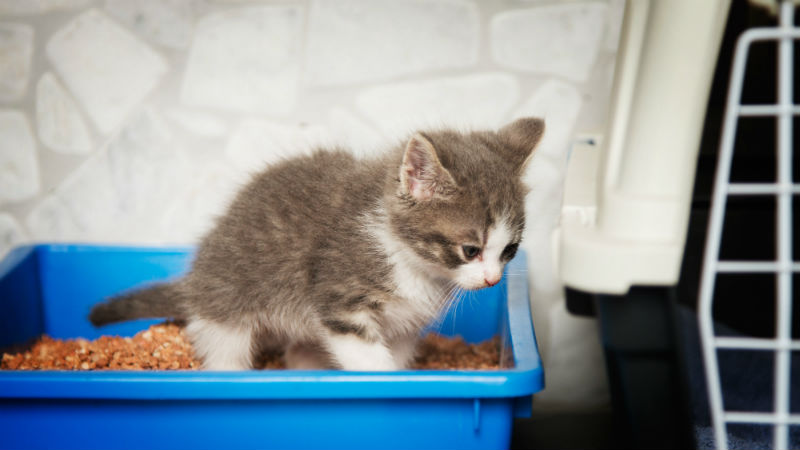Cats inappropriately eliminating (urinating/defecating) around the house is a common issue that we often talk about with pet owners. There are two main reasons why your cat may be exhibiting this problem; it could be behavioural or medical.
To determine if it is medical or behavioural we would first need to do an exam. At this exam, we will be asking questions about the home environment of the cat, and then we will most likely run some diagnostics. Some diagnostics we would look at running would be a urinalysis, bloodwork, and possibly some radiographs. There could be different medical reasons such as kidney disease, diabetes, a urinary tract infection (UTI), or perhaps even arthritic changes.
If the physical exam and diagnostics come back normal then we could be looking at behavioural reasons for the inappropriate elimination. To figure out what could be causing this behaviour we’ll look at what kind of living environment your cat is living in. Did you recently move? Has there been a new addition to the household? How often are the litterboxes being cleaned? How many litterboxes per cat do you have? Where is the litter-box located at?
Cats can be extremely sensitive to any changes. Things such as a new cat in the home or a new baby can be enough to cause stress. If the litterbox isn’t clean enough or is in a high traffic area that can be enough reason for them to go somewhere else. Sometimes if there is only one litterbox in a multi-cat home, there could be some bullying going on that is preventing this particular cat to feel safe going in the litter-box.
Some solutions are:
1) Move the litterbox to an area that feels more secure for your cat.
2) Have at least 1 litterbox per cat, and then one extra.
3) Clean the litterbox daily, and change the litter 1-2 times per week.
4) Use calming pheromones, such as Feliway, to help decrease stress.
If none of those solutions are working, then there is the option of using an anti-anxiety medication to help decrease stress. This would be something to discuss with your veterinarian.
Written by Michelle Larkin, VT



